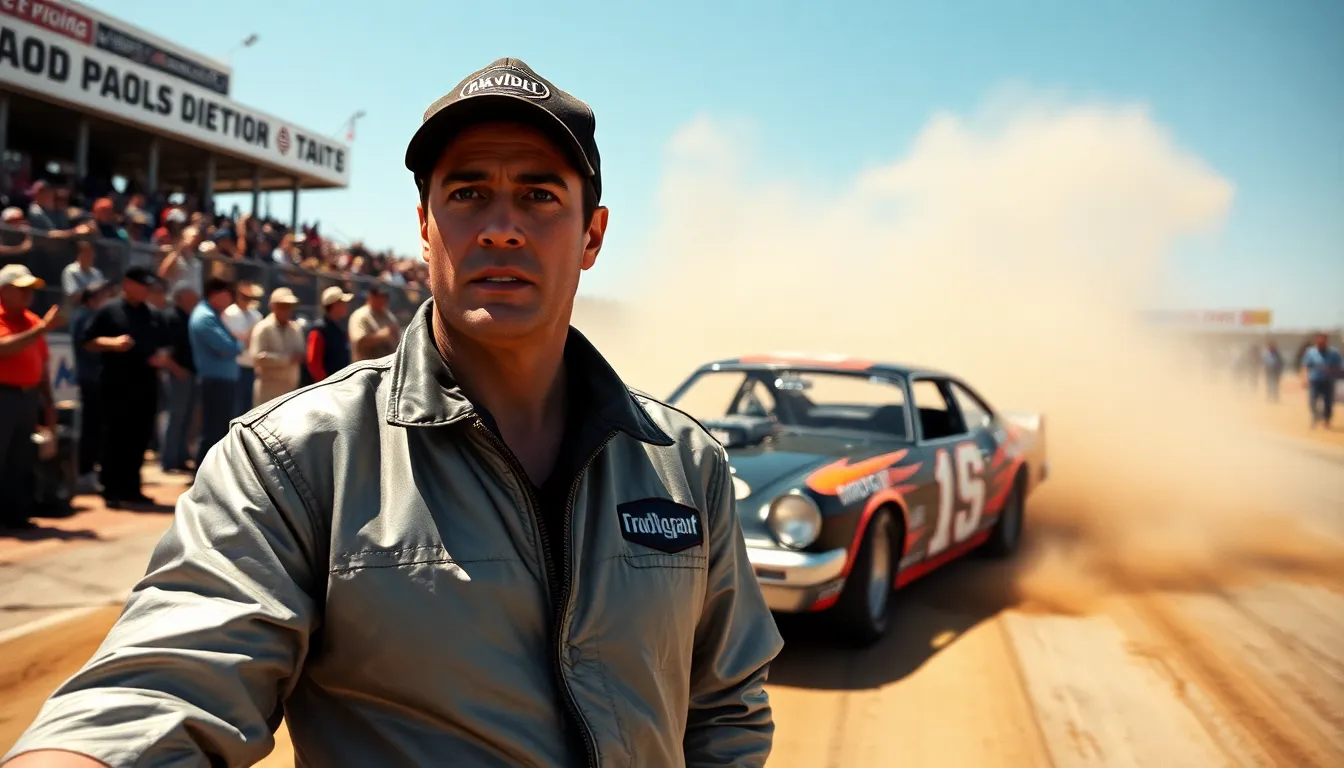Table of Contents
ToggleLights, camera, history! Ever wondered why some films hit you right in the feels while others leave you scratching your head? The secret sauce often lies in the historical context. It’s like adding a dash of salt to your favorite dish; without it, everything’s just bland. Understanding the era, events, and societal norms behind a film can transform a simple story into a rich tapestry of meaning.
The Importance of Historical Context in Film
Historical context plays a crucial role in filmmaking. It shapes the narrative, influences character development, and enriches the viewer’s understanding. Knowledge of specific events from the past can transform a simple story into a powerful commentary on societal issues.
Filmmakers often weave historical elements into scripts to enhance authenticity. Period-accurate details, such as costumes and settings, create immersive experiences for audiences. Every aspect, from dialogue to cinematography, benefits from a grounded appreciation of the time depicted.
Audiences connect emotionally when they can relate to the historical backdrop. Films set against significant events, like wars or social movements, evoke feelings of empathy and reflection. Characters navigate real-world challenges, allowing viewers to draw parallels between the past and present.
Understanding societal norms of an era adds layers to character motivations. Actions and decisions reflect the complexities of human nature within specific historical circumstances. Context explains why characters behave as they do, making their journeys more compelling.
Many acclaimed films highlight the importance of historical context. Movies like “12 Years a Slave” showcase the horrors of slavery, while “The Imitation Game” portrays the pivotal role played by Alan Turing during World War II. Such films spark conversations about history and its ongoing impact.
Historical context not only informs the narrative but also educates viewers. It invites discussions about past injustices and achievements, fostering a deeper appreciation for history. By incorporating historical elements, filmmakers continue to bridge the gap between entertainment and education.
Key Periods in Film History

Historical context in film varies widely across different eras, each offering unique storytelling styles. Understanding these periods provides insight into how societal changes have influenced filmmaking.
Silent Era
Silent films dominated from the late 19th century until the late 1920s. During this time, filmmakers employed visual storytelling through expressive acting, intertitles, and elaborate sets. Iconic examples include works by Charlie Chaplin and D.W. Griffith, who pushed the boundaries of cinematic techniques. Audiences relied on exaggerated gestures and musical scores to convey emotions and plot. This era laid the foundation for future filmmaking styles, emphasizing the power of visual communication.
Golden Age of Hollywood
The Golden Age of Hollywood emerged from the 1920s to the 1960s, marked by the studio system’s dominance. Iconic films such as “Gone with the Wind” and “Casablanca” showcased grand narratives and star-studded casts. Studios tightly controlled production, marketing, and distribution, shaping audience expectations. It was a time of significant technological advancements, notably the introduction of sound in films. This period played a crucial role in defining American cinema, with a focus on storytelling that resonated with diverse audiences.
Modern Cinema
Modern cinema began in the late 20th century and has continued evolving into the 21st century. New genres emerged, reflecting contemporary issues such as technology, war, and identity. Directors like Christopher Nolan and Quentin Tarantino introduced innovative narrative structures and visual styles. Digital filmmaking transformed production techniques, making it more accessible and cost-effective. This era has seen a growing emphasis on global perspectives, diversifying storytelling and representation. Engaging with modern cinema highlights the ongoing dialogue between film and society, as narratives increasingly tackle complex themes.
Influences of Historical Events on Film
Historical events shape film narratives significantly. Filmmakers create powerful stories that reflect societal changes, wars, and technological shifts.
Wars and Social Movements
Wars often provide fertile ground for filmmakers. The world witnessed films like “Saving Private Ryan” and “Schindler’s List,” which depict the human cost of conflict. These narratives resonate due to their emotional weight. Social movements also inspire filmmakers to explore themes of justice and equality. Movies such as “Selma” and “Milk” highlight pivotal moments in civil rights history. These films encourage viewers to engage with the struggles and triumphs that define societal progress. Documentaries capture real events, further enriching public understanding of historical contexts. Empathy grows when audiences witness the struggles portrayed on screen, fostering discussions about ongoing activism.
Cultural Shifts and Technological Advances
Cultural shifts influence film genres and storytelling techniques. The rise of feminism in the 1970s shaped films like “Thelma & Louise,” reflecting changing societal norms. Diverse perspectives drive filmmakers to tell stories that resonate with broader audiences. Technological advances also transform filmmaking. The introduction of CGI revolutionized how filmmakers depict fantastical elements, as evident in “Jurassic Park” and “Avatar.” Innovations in sound and editing techniques enhance storytelling, making narratives more immersive. Streaming platforms increased access to films, introducing numerous voices and encouraging unique stories. As cultural dynamics evolve, filmmakers respond, creating a rich tapestry of narratives that mirror society’s ongoing transformation.
Analyzing Historical Accuracy in Film
Analyzing historical accuracy in film reveals complexities in storytelling. Filmmakers often aim for authenticity while engaging audiences.
Portrayal of Real Events
Portrayal of real events enhances a film’s credibility. Acclaimed works like “12 Years a Slave” and “Saving Private Ryan” depict significant historical moments with precision. These films stimulate discussions about their subjects, encouraging viewers to reflect on past injustices and triumphs. Accuracy in detail enriches character arcs, influencing how audiences connect with the narrative. Filmmakers often conduct extensive research to ensure fidelity to the time period. This commitment to historical fact adds layers of meaning, making a story resonate emotionally and intellectually.
Artistic License and Interpretation
Artistic license allows filmmakers to interpret history creatively. Creative choices often shape narratives, enabling filmmakers to convey themes and messages beyond factual accuracy. Films like “The Imitation Game” blend fact with fiction to create compelling drama. While this approach engages audiences, it can distort historical truth. Filmmakers sometimes emphasize emotional truths over minute details to craft more relatable stories. This balance between accuracy and artistry challenges viewers to question the boundaries of historical representation, sparking deeper inquiry into the past.
Case Studies of Historical Films
Historical films illustrate the rich interplay between narrative and context. They offer insightful examples that exemplify how history shapes storytelling.
Notable Examples
“12 Years a Slave” powerfully portrays the horrors of slavery in 19th century America. This film’s meticulous attention to detail fosters a deep emotional connection to its characters. “The Imitation Game” recounts Alan Turing’s pivotal role in World War II, exploring themes of secrecy and societal prejudice. Period-accurate costumes and settings enhance the viewer’s immersion. “Saving Private Ryan” shows the brutal realities of the D-Day invasion, emphasizing the human cost of war. Each film highlights significant events, making history accessible through compelling narratives.
Impact on Audience Perception
Films like “Selma” and “Milk” encourage discussions about justice and equality. Such narratives resonate with viewers while informing them about critical social movements. Audiences often gain a deeper understanding of historical events through these portrayals. Emotional connections compel viewers to reflect upon past injustices. Empathy grows as audiences witness character struggles set against authentic backdrops. Historical accuracy enables viewers to engage with the material more profoundly, fostering education and awareness. Overall, the impact of these films shapes cultural conversations and influences societal perspectives.
Historical context plays a pivotal role in shaping the narratives and emotional depth of films. By grounding stories in specific eras and events, filmmakers create immersive experiences that resonate with audiences. This connection not only enhances viewer engagement but also prompts meaningful conversations about societal issues and historical injustices.
As cinema continues to evolve, the interplay between history and storytelling remains vital. It allows filmmakers to explore complex themes while educating audiences about the past. Ultimately, understanding historical context enriches the viewing experience and fosters a deeper appreciation for the art of filmmaking.



